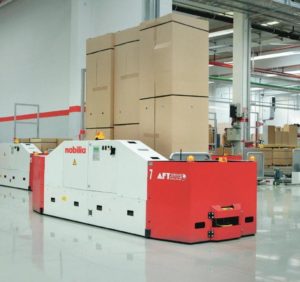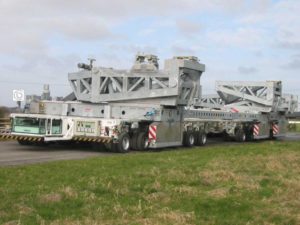


Wire guidance systems function using an electrical cable embedded in the pavement that defines the path for the vehicle. Energized by an alternating current, this cable sends out a electromagnetic field. The vehicle is equipped with a guidance antenna that receives the waves of the field. The antenna voltages allow the calculation of the deviation of the antenna (and therefore of the vehicle) from the cable in the ground.
ADVANTAGES AND CHALLENGES:
- Reliable and safe technology. GOETTING components are used for passenger transport up to 55 mph.
- Performance of this guidance system is not affected by adverse light conditions including operation at night, under fog, airborne dust, lint, fluid spraying, bright daylight and welding.
- Performance is also not influenced by objects on the path like debris, spills, snow, ice, standing water, fluids and floor irregularities etc.
- Large metal plates (e.g. in steel mill) and concrete rebar near the guide wire may have a negative impact on system performance. CTS and GOETTING offer site evaluation services to deter-mine the best solution for the environment and application.
- The vehicle has no internal information about its location along the guide-wire. Additional components, e.g. an inexpensive transponder (RFID) reader is a possible solution to mark locations if needed.
